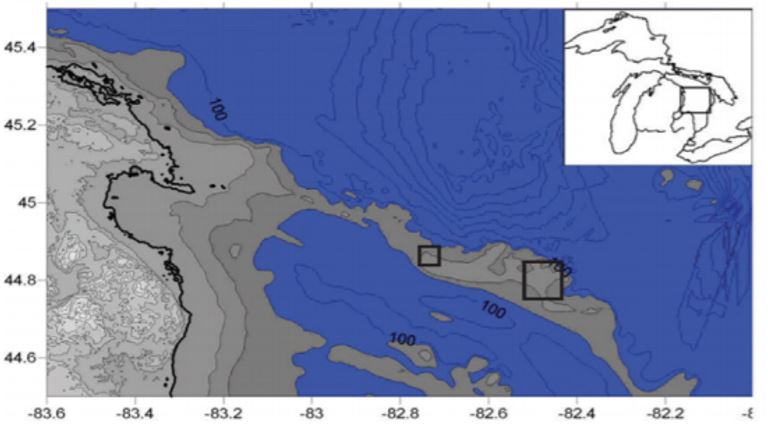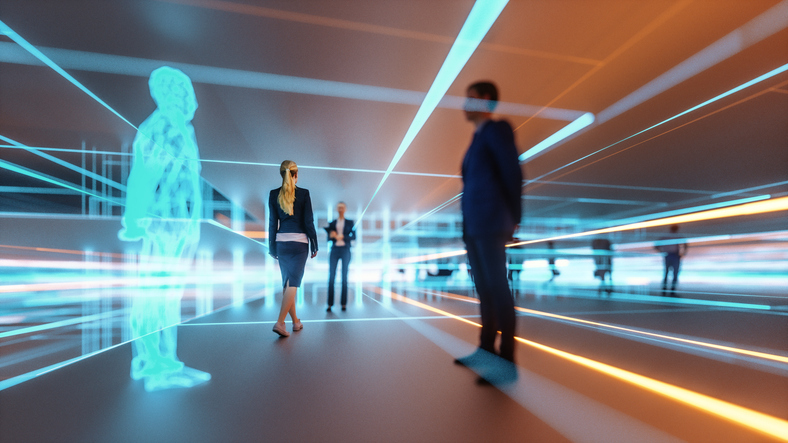Without archaeological investigations, many of the historical sites we know today would remain a mystery, and therefore the history of many societies across the world. Today, the discovery and study of ancient submerged civilizations has increased in significance following the heightened risks of climate change and changes in sea levels.
Using artificial intelligence (AI), machine learning (ML), and virtual reality (VR), a team in the U.S. believe they can help predict the location of many submerged archaeological sites that are difficult to access and contain unknown components, to generate and test anthropological and archaeological theories.
The team focused their efforts on the Alpena-Amberley Land Bridge, located in Lake Huron, one of the five Great Lakes of North America. While submerged today, it was once above water for around 2000 years; from 10,000 BP to 8,000 BP. Up to that point, most of the underwater archaeology in the Great Lakes focused on shipwrecks. The team saw this as an opportunity to identify ancient sites and civilizations that were currently out of reach of modern economic development, but through a systematic approach.
Dr. John O’Shea, a curator for Michigan Underwater Archaeology at the University of Michigan-Ann Arbor also speculated that the sites might be a pathway for the migration of caribou during their fall and spring migrations. According to Dr. John, since caribou were the principal prey species and the stores of caribou meat were essential for surviving through the winter, it was essential for the hunters to be able to predict where the animals would migrate. Failing would mean starvation.
Figure 1 illustrates the location of the Land Bridge relative to the State of Michigan and the location of the team’s exploration.

Figure 1: The location of the Alpena Amberley Land Bridge, where the explored areas are denoted as squares on the map
Using information and data about the surrounding area, the team’s DeepDive system created a virtual 3D landscape. This was done by stimulating lake levels at different points in time, generating the height of each area in the region, pinpointing the location of swamps, ponds and rivers, and identifying potential vegetation types. A path-planning component was then implemented to track and evaluate caribou herd size and movement over differing landscapes.
Once the AI tool recreates the ancient environment, including the dips and drops in the terrain and the rush of water against the coastline, researchers can study and refine their own real-world discoveries. This includes studying the size and composition of the ancient population, their patterns of local and regional interaction and seasonal movement, thereby transforming how ancient sites are explored.
“The AI system is designed to identify locations that would have been advantageous to caribou hunters,” said Dr. John O’Shea. “We can use the system to place a traditional hunter in a location, and then question them on what they see and their assessment of the potential of a location for hunting or other activities.”
Figure 2 outlines the virtual model, where users can study the site and known artifacts to see their position relative to herd movements generated by the pathfinding algorithms.

Figure 2: A detailed display of actual v-shaped hunting blind fond underneath modern-day Lake Huron (left) a caribou herd moving along a precomputed path generated by a selected algorithm (right)
Ultimately, the system could be used to predict the location of new underwater sites that can be examined archaeologically. While land sites are more convenient to study, human disturbances over the years have made evidence of stone hunting structures or wood artifacts unlikely to survive. Because underwater sites are more likely to be intact and preserved, studying submerged landscapes and the movement of herds could provide the missing pieces in the study of ancient civilizations and where human activities were focused.
Beyond the straight science, the DeepDive system’s game-like format is being considered for school and educational uses in Alaska and other regions according to Dr. John, and even as a potential vehicle for reinforcing the use of Native languages.
For more information on artificial intelligence and virtual reality, visit the IEEE Xplore digital library.





